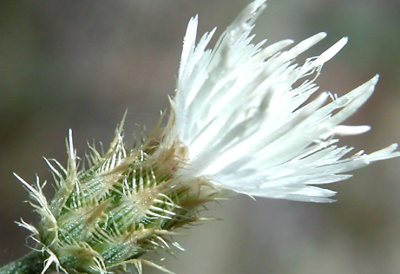Knapweed Control – Combinations of Practices
To effectively control diffuse knapweed, it requires a good combination of well administered biological, physical, and chemical control, as well as a good land management practice. Regardless of the particular control measure adopted, the plant must be uprooted; else the plant will grow back. Also, plants should be allowed to grow naturally in the fields where diffuse knapweed was removed; this will prevent its reestablishment.
Noxious Diffuse Knapweed Control Options
Mechanical Control
Using mechanical efforts like mowing the diffuse knapweed, both in its bud stage and in its flowering stage will help to reduce seed production 
It is also easy to hold and pull diffuse knapweed by hand; removing at least two third of the root. You may begin the pulling in may; drop the uprooted plants lying on the ground, if they are not in the flowering stage yet. If they have flowered already, then put them in a bag for disposal. Ensure you wear long-sleeved shirts, trousers, and hand gloves.
However, hand pulling may be effective in small patches and not for major infestations.
Biological Control
There are two known species of seed head flies (U. quadrifasciata and Urophora affinis) that help to reduce the production of seed by the plant significantly. Biological control is made more efficient when the U. quadrifasciata and Urophora affinis are used together with the Sphnoptera jugoslavica (root-boring beetle). Sheep also help as they graze the baby plants during spring until early summer. Cattle and goats also feed on the young diffuse knapweed plant.
Chemical (Herbicide) Control
A handful of Herbicides are made and labeled for diffuse control/management. However, some herbicides have been tested either individually or in combination with other chemicals and the result was 100% effectiveness. These chemicals are picloram (Tordon), clopyralid (Stinger, Transline), dicamba (Banvel), clopyralid + 2,4-D (Curtail) and 2,4-D.
Do you seek well-trained professionals to help or guide you in controlling/managing a diffuse knapweed infestation? Request a quote today or Contact SprayTech, Colorado weed control specialists, at 720-248-0000 to discuss control options.

